How to knit single compact shapes using the intarsia technique
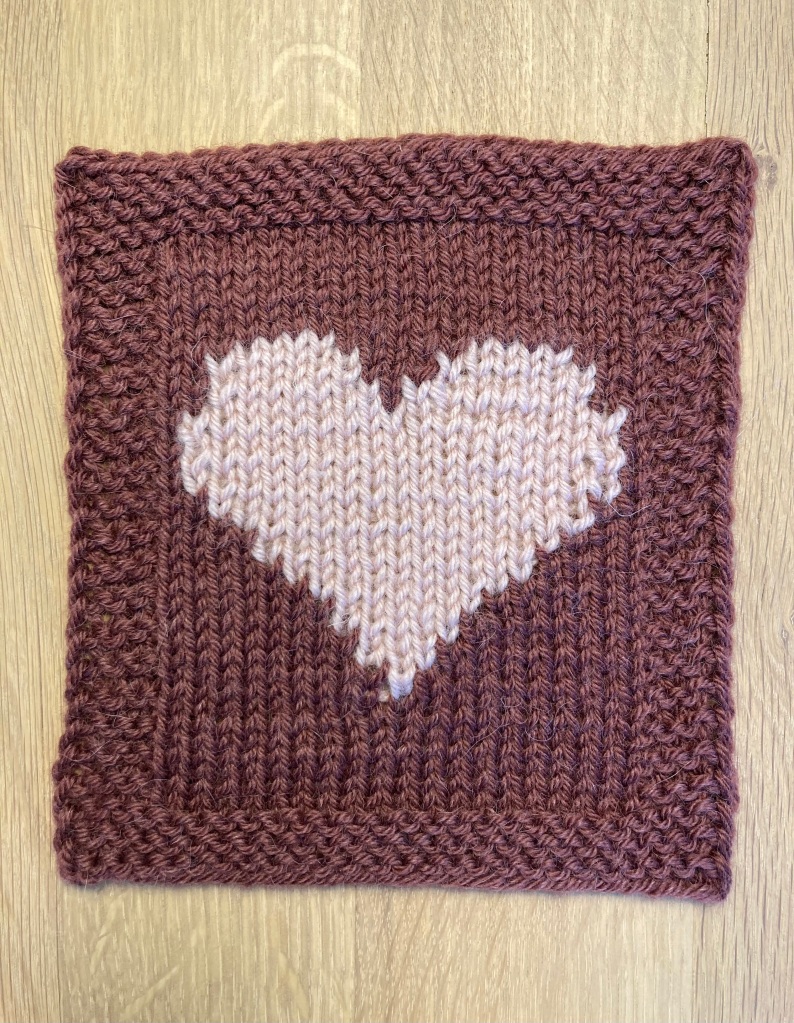
The intarsia technique is used when knitting a single compact shape on two needles. The advantage is, that you have no floats behind the work. To achieve this, you work with a separate ball (or bobbin) of yarn for each colour area.
You already know how to
- cast on
- knit
- cast off
- slip the first stitch purlwise
- knit horizontal stripes
- purl
- follow a knitting pattern containing abbreviations
- read a chart
- knit stranded knitting in the round
Instructions
For this square you will need 5 balls of yarn. In the diagram below you can see the area covered by each ball of yarn.
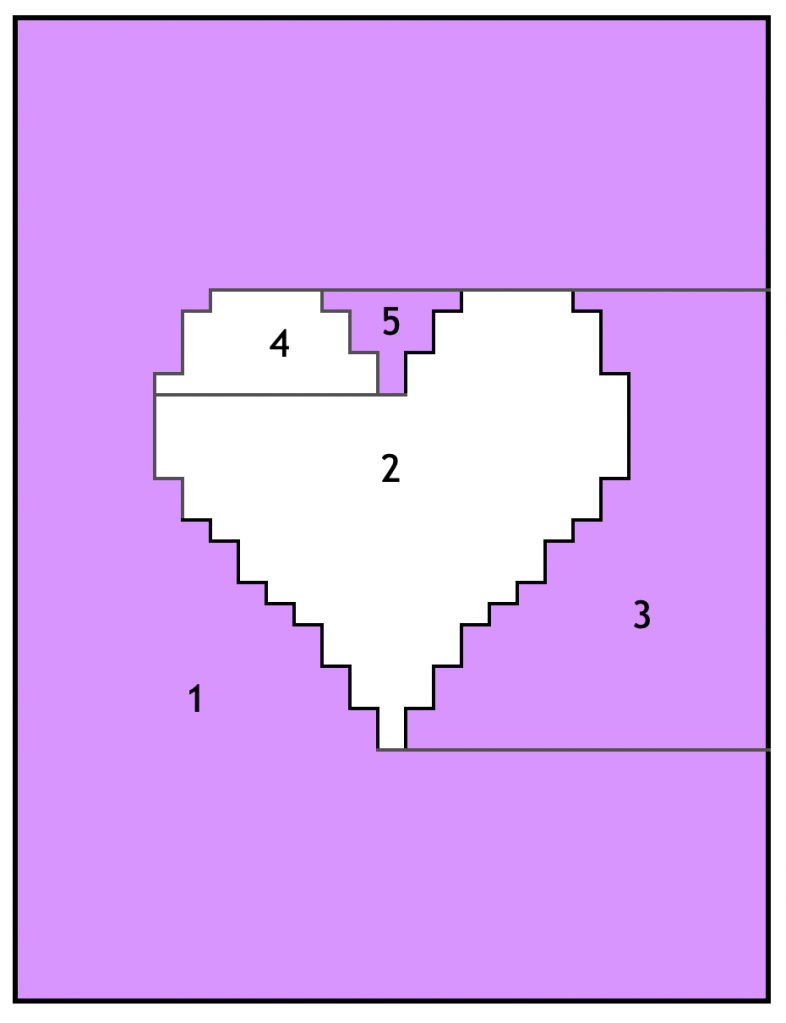
Working with 5 full sized balls would be very cumbersome. Therefore you should start by winding your bobbins.
Ball no. 1 will be your main ball of LC yarn.
Ball no. 2 will be your main ball of DC yarn.
Ball no. 3: Make a bobbin with 4m of LC yarn
Ball no. 4: Make a bobbin with 1m of DC yarn.
Ball no. 5: Make a bobbin with 0.6m of LC yarn.
Using LC, cast on 27 sts.
Rows 1 to 6: Sl1p, k26.
Rows 7, 9 and 11 (WS): Sl1p, k3, p19, k4.
Rows 8, 10 and 12 (RS): Sl1p, k26.
In rows 13-19 you will be working with balls 1, 2 and 3.
Row 13 (WS): Sl1p, k3, p9. With ball 2 (DC) p1. With ball 3 (LC) p9, k4.
Row 14 (RS): Sl1p, k12. With ball 2 (DC) k1. With ball 1 (LC) k13.
When changing colour you should twist the yarns.
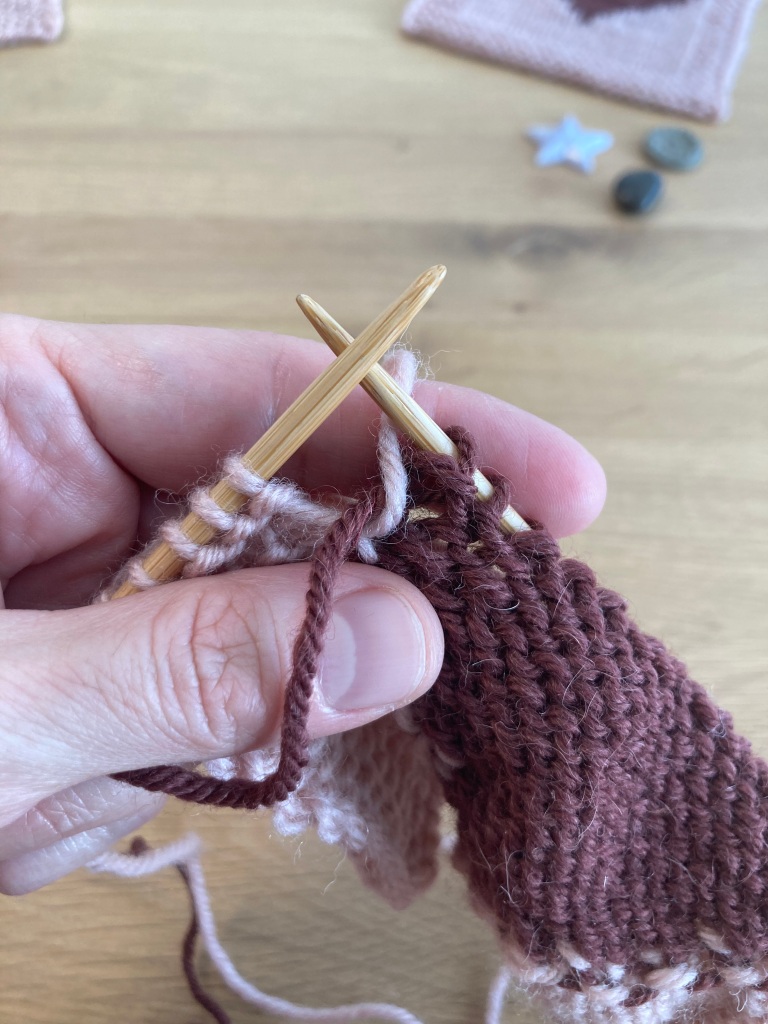
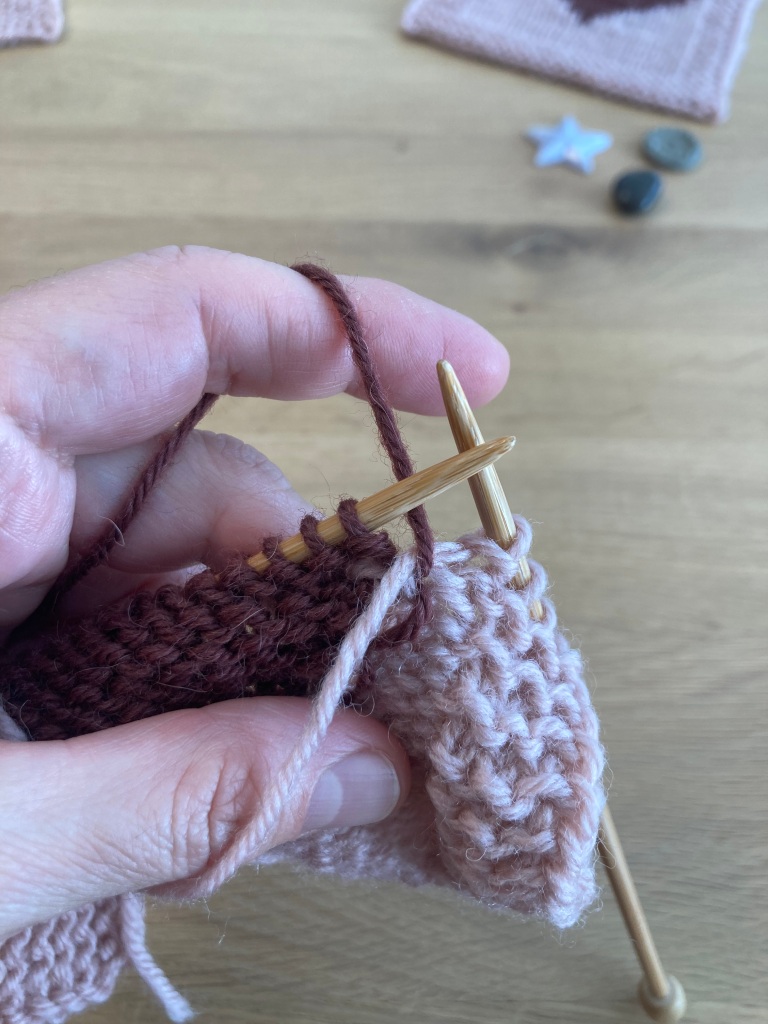

Continue working from chart as set.
In rows 30-34 you will be working with all 5 balls/bobbins.
Cast off and weave in ends.
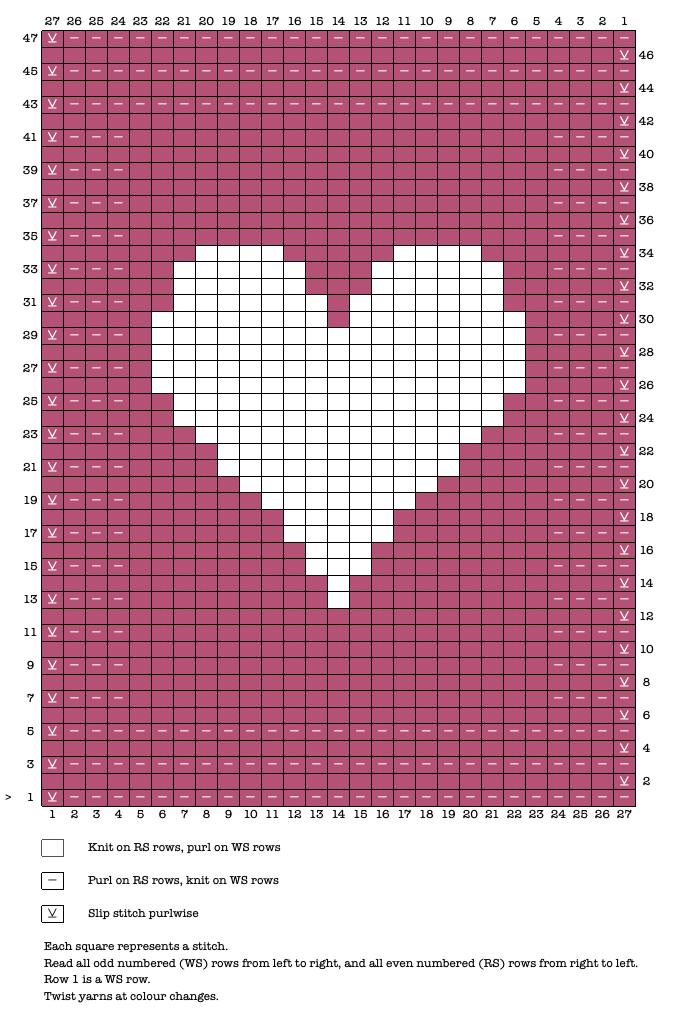
This is what the wrong side looks like:
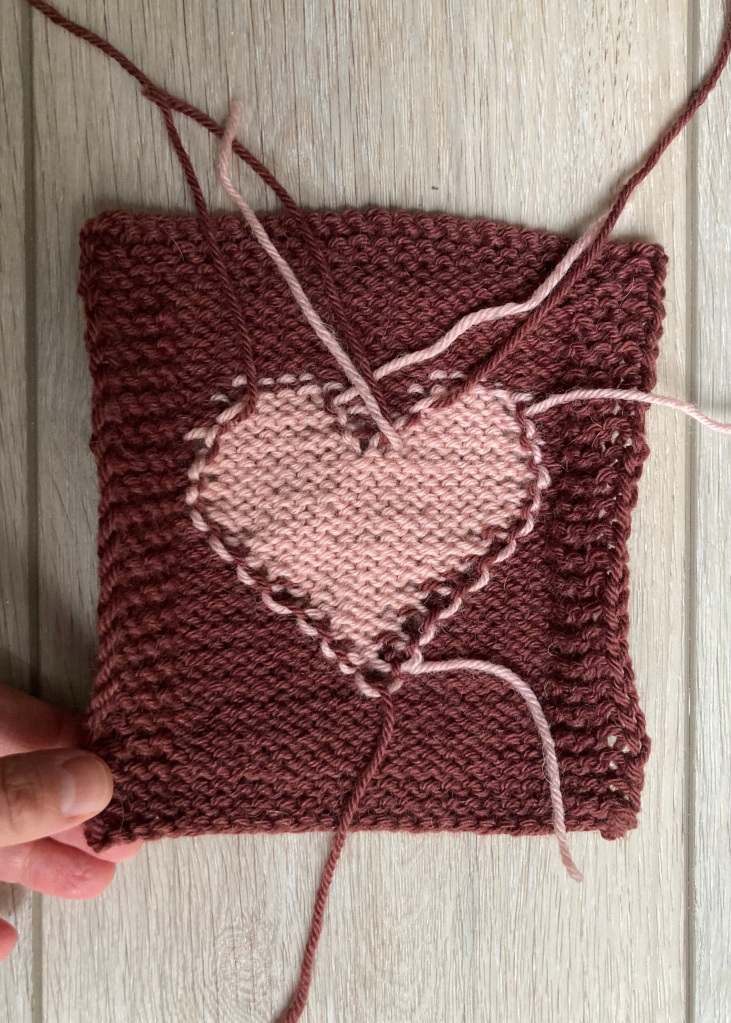

Anna’s tips 😉
🧶 To make your life easier, you can lock the new yarn in place, one stitch before starting on a new ball/bobbin by placing it over your working yarn. This is just to stabilize my yarn, while I knit the first stitches. Afterwards I pull it out again, before I weave in the end.
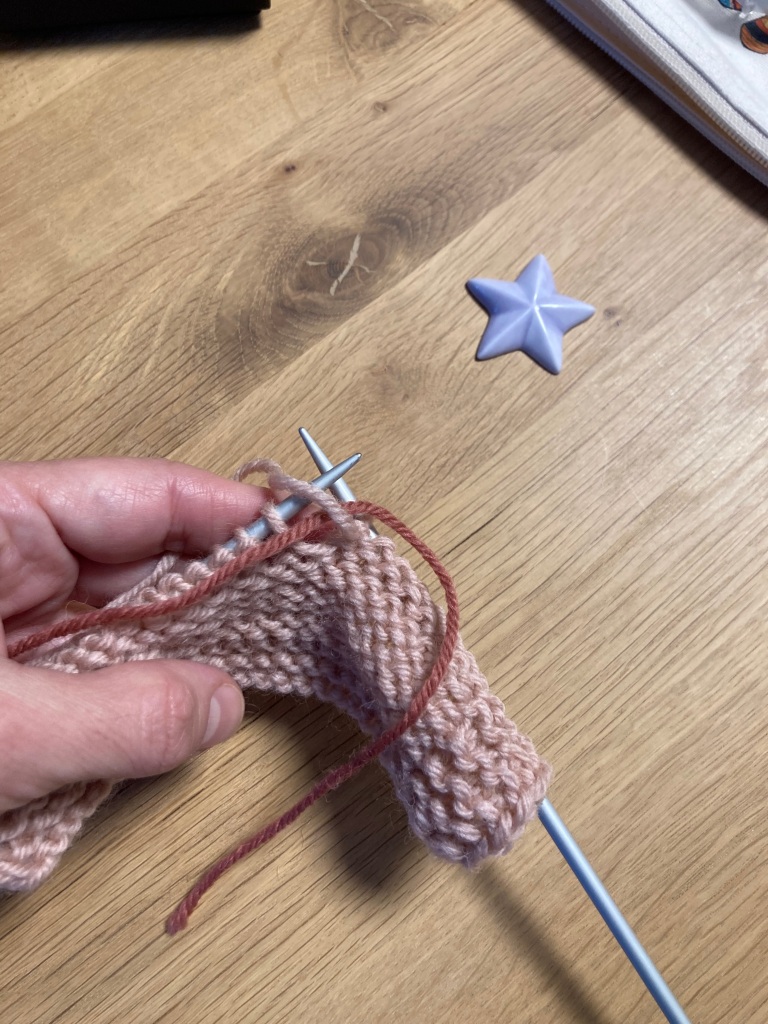
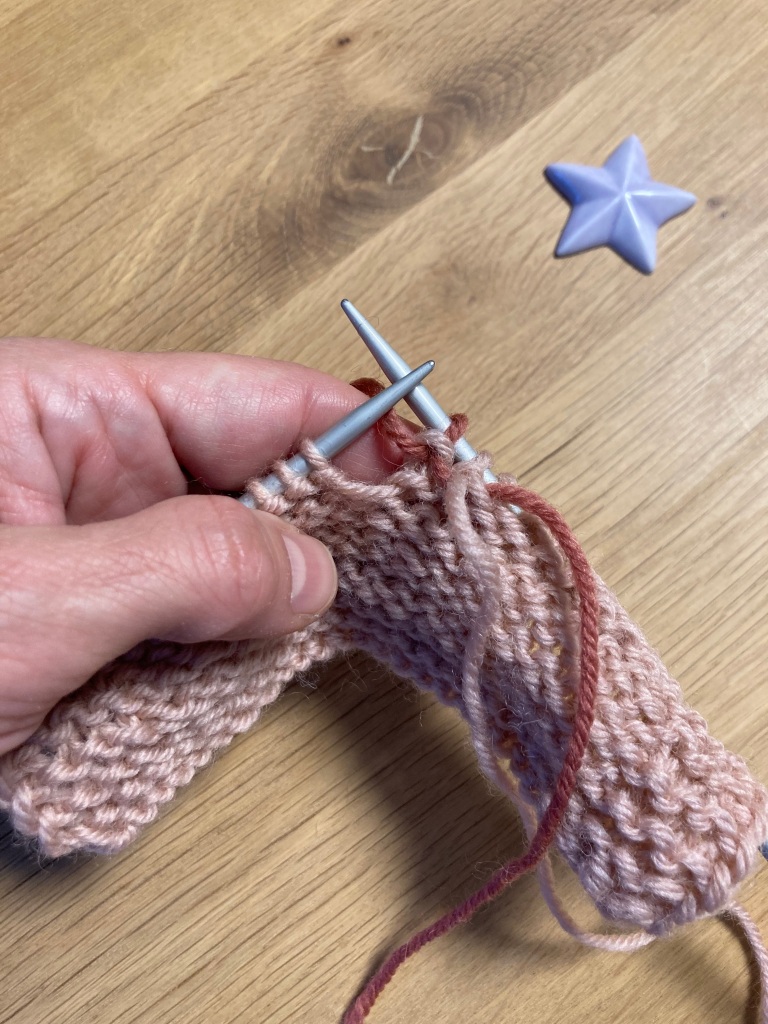
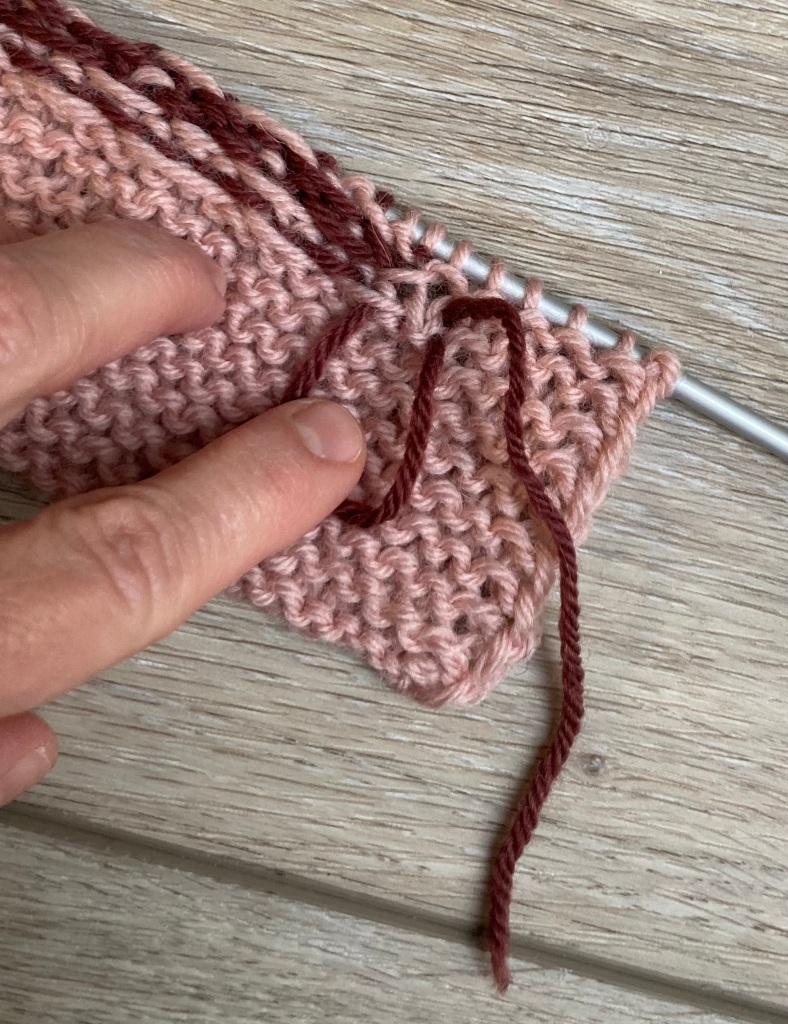
🧶 When weaving in the ends, you want the two legs of your knit stitch to be pulled in opposite directions. So you should make sure you make the first sewing stitch in the right direction and not “close” your knit stitch.
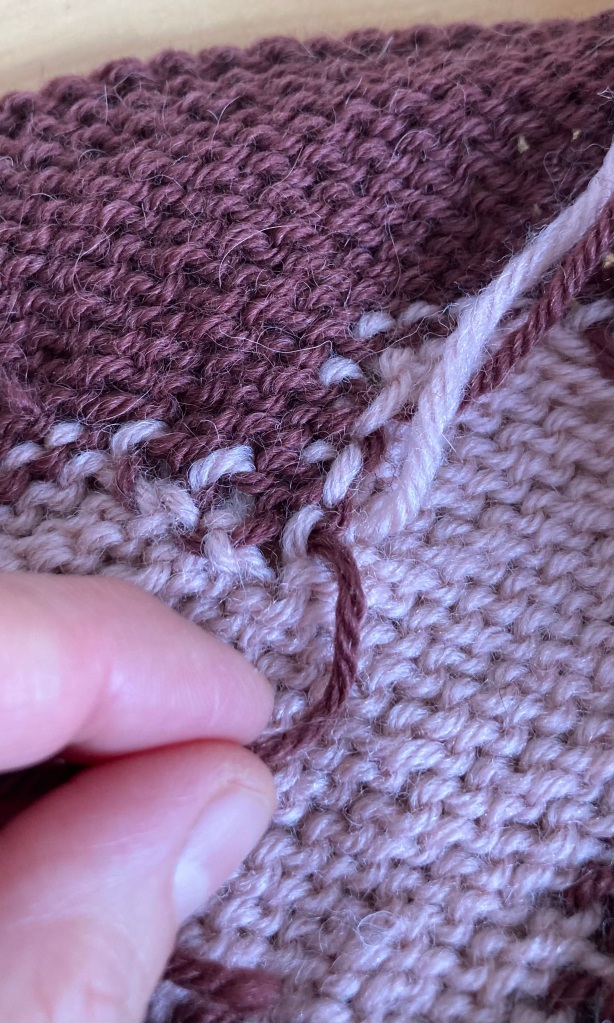
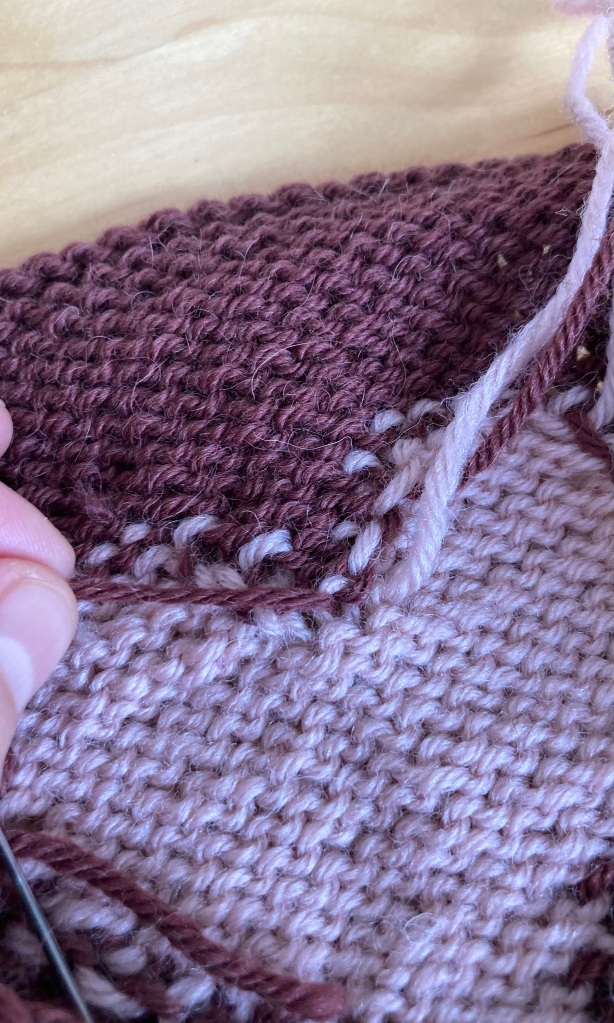
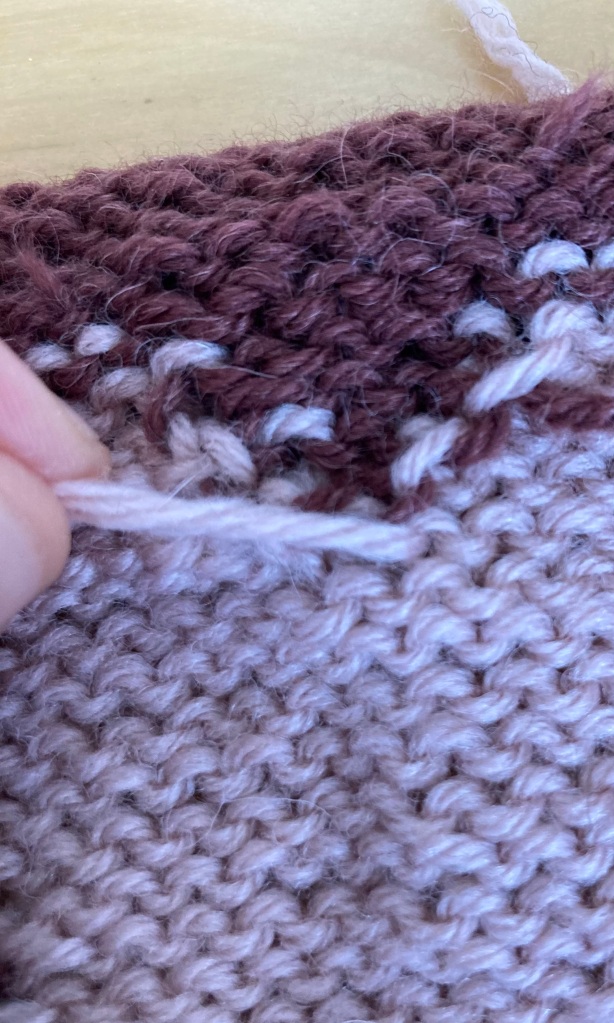
Geeky Notes 🤓
🧶 It is, of course, possible to combine intarsia with stranded knitting. In rows 30 to 34 of the heart you could use four balls of yarn instead of five and strand the DC yarn on the wrong side in the middle section.
🧶 Technically, it’s not strictly necessary to twist the yarns whenever you have a left slant (seen from your point of view, while knitting), but no harm done if you do. The colour changes where it is not strictly necessary to twist the yarns, are marked with green in the chart below.

If you successfully completed this square, you have learned how to
- knit single compact shapes using the intarsia technique
